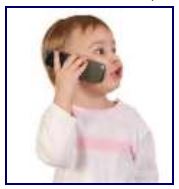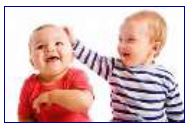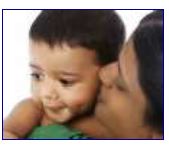During the toddler years (12 to 35 months), children’s language development grows rapidly. Toddlers gain the ability to say words clearly, combine words into phrases, and express their needs and wants.

Toddler Language Development
Some common characteristics of language development include:
12- to 15-month-old toddlers
- Understand more words than they can speak.
- Follow simple directions (e.g., stop, give to mommy).
- Speak around 10 single words, although the words may not be spoken clearly.
- Point to something they want while making a sound.
- Try to imitate words spoken.

15- to 18-month-old toddlers
- Understand and respond to simple directions.
- Understand a variety of single words and some two-word sentences.
- Know and point to things in books or pictures when asked.
- Give familiar objects to adult when named.
- May still babble, but can speak at least 20 single words correctly.
- Imitate gestures and words.
- Use different tones, pitch and volume when talking.

18-month to 2-year-old toddlers
- Understand 200 to 500 words.
- Follow simple directions.
- Speak up to 50 words.
- Begin to make two- or three-word sentences.
- Ask many questions.
- Pay attention to their names when called.
- Repeat a word or phrase over and over.
2- to 3-year-old toddlers
- Start to listen with interest, but are easily distracted.
- Start to understand simple concepts, such as in/on/under and big/little.
- Know simple who, what and where questions, but not why questions.
- Enjoy a simple story with pictures.
- Use 300 words.
- Put four to five words together.
Adapted from Talking Point.
Word Spurt
Sometime around 18 months, many but not all toddlers, experience a word spurt,1 a sudden large increase in their spoken vocabulary. During this time, children understand that objects have names and gain the ability to fast map, which means they can hear a new word and map its meaning in their brains after hearing it only a few times.
Dual Language Learners
Some toddlers are learning two or more languages at the same time. Dual language learners tend to talk later than their peers, as their brains are learning to process multiple languages. Toddlers benefit from hearing both languages often and in a variety of circumstances.2 Once dual language toddlers start speaking, they catch up quickly and become fluent in both languages.
How to Help Toddlers’ Language Skills
Parents and caregivers can help toddlers’ language skill development by providing a language-rich and nurturing environment.
Avoid baby talk
Speak clearly and use correct words and complete sentences. Some forms of baby talk, like a sing-song voice (parentese), are okay for toddlers’ language development, but avoid nonsense words (PBS).
Talk together
Speak to toddlers whenever you are together. Describe what you are doing, point things out, ask questions and sing songs. According to new research from Stanford psychologists, the amount of time parents speak directly to their toddlers can make an incredible difference in the children’s language proficiency and vocabulary.3
Listen
When toddlers are trying to talk to you, be a good listener. Look at their eyes and be responsive to what they say. In today’s device-focused world, they will be more likely to speak more when they know you are interested in what they are saying.
Help them build words and expand their words into sentences
Acknowledge toddlers’ use of language by repeating the words and phrases they say. Also help them learn how to build on language they know by expanding their words into phrases and sentences. If a toddler says, “Mommy go?” You can say, “Yes, mommy is going to work now.”
Ask open-ended questions
Two-sided conversations (give-and-take) are a great way to increase language development,4 because they help toddlers practice their new skills. Pose questions that require more than a yes or no answer so toddlers can use their vocabulary.
Read to your child
Reading to toddlers helps them learn new vocabulary words and understand how stories flow. During reading time, ask toddlers to find things in the picture and tell you about what is happening on the page.
Remember, you play a critical role in toddlers’ language development. Engage in conversations, read together, talk, listen and interact with your toddler.
References
1 Nazzi, T., & Bertoncini, J. (2003). Before and after the vocabulary spurt: two modes of acquisition? Developmental Science, 6, 136-142.
2 Sorace, A., & Ladd, B. (2004). Raising bilingual children. Linguistic Society of America.
3 Weisleder, A., & Fernald, A. (2013). Talking to children matters: Early language experience strengthens processing and builds vocabulary. Psychological Science, 24(11), 2143-2152.
4 Zimmerman, F. J., Gilkerson, J., Richards, J. A., Christakis, D. A., Xu, D., Gray, S., & Yapanel, U. (2009). Teaching by listening: The importance of adult-child conversations to language development. Pediatrics, 124, 342-349.


